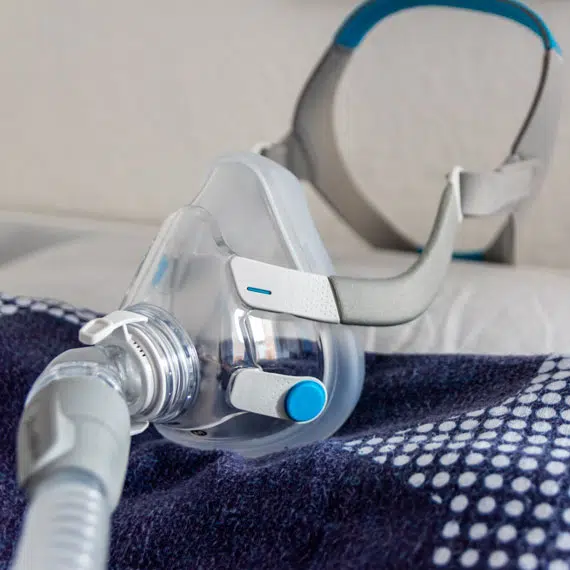Sleep Apnea Dentist Bellevue – CPAP After Tooth Extraction & COAT Sleep
A sleep apnea dentist Bellevue specializes in treating airway issues during sleep using devices like CPAP or oral appliances. If you’ve had a tooth removed, you may ask, can you use CPAP after tooth extraction or worry about CPAP after tooth extraction affecting healing. CPAP airflow can dislodge the blood clot in the socket, increasing the risk of dry socket. So, CPAP use after tooth extraction should be delayed for at least 48–72 hours or until your dentist confirms it’s safe. In such cases, COAT sleep—also called continuous open airway therapy—is a preferred temporary or long-term alternative.
COAT Therapy In Sleep Apnea
Continuous Open Airway Therapy (COAT) is an oral device used to treat sleep apnea. It works by pushing the jaw forward. This opens the airways, reducing the airflow restriction that triggers obstructive sleep apnea and snoring. Dentists employ COAT as an alternative to CPAP. Moreover, if the patient is obese, COAT can be paired with conservative therapy such as weight reduction. Typically, COAT is suggested after the dentist has evaluated the patient’s medical and dental history.
Several individuals choose the COAT due to its comfort, ease of travel, maintenance, and quiet operation. Dental experts may recommend COAT as the first-line therapy for those suffering from mild to moderate sleep apnea.

Benefits of sleep apnea treatment
Sleep apnea may affect a person’s lifestyle and wellness in different ways. Hypertension, diabetes, excess weight gain, cardiovascular disease, and digestive problems are among health complications associated with sleep apnea. Patients can reduce their risk of developing health problems by seeking COAT or CPAP therapy. Here’s how your health will improve once you’ve managed sleep apnea:
Sleep apnea may cease respiration up to 90 times every hour. This might prevent you from getting enough sleep. After sleep apnea therapy, you will be able to breathe normally throughout the night. You may also feel more refreshed and energetic throughout the day.
As blood oxygen concentration declines, sleep apnea may put additional strain on your heart. Whenever your body attempts to wake up and restore respiration, adrenaline is released into the bloodstream. Adrenaline levels may stay high over extended periods. This can lead to hypertension, cardiovascular disease, and heart arrhythmia. Insufficient oxygen may also result in elevated carbon dioxide levels. This may exacerbate chest tightness and inflammation. These physiological effects might thicken the heart’s walls, reducing cardiac function.
Severe daytime weariness may be a common symptom in sleep apnea sufferers. When your circadian rhythm is disrupted, your body cannot receive enough restful sleep. You may ultimately wake up exhausted, sore, or even irritable. After receiving CPAP therapy, some patients may see an instant rise in energy levels. On the other hand, others see an improvement in just a few weeks.
Sleep deprivation may lead to demotivation since it makes you feel too exhausted to carry out daily activities. It may also cause hormonal imbalance. Sleep apnea reduces leptin levels, the hormone involved in indicating satiety. It also raises ghrelin levels, the hormone that tells you when you’re famished. You may continue eating without feeling satisfied because of the lack of these hormones. However, after receiving sleep apnea treatment, you may recover the stamina and motivation to become more active and eat properly.
Sleep apnea can cause discomfort around the head owing to a shortage of oxygen in the circulation. When your body is depleted of oxygen, your blood vessels may widen to increase blood flow. However, when there is insufficient oxygen, carbon dioxide is recycled in circulation and can cause discomfort. Patients may become trapped in a pattern of headaches and pain. As a result, the patient’s sleeping habit may be inhibited and disrupted. Effective sleep apnea treatment may improve sleep quality and alleviate headaches and discomfort.
CPAP Therapy In Sleep Apnea
A Continuous Positive Airway Pressure (CPAP) device consists of a tube and a mask worn over the nose or mouth to supply air via a blocked airway. CPAP is an effective obstructive sleep apnea therapy.
Patients who use CPAP usually report an increase in their sleep quality and general health. Several patients, however, resist CPAP therapy owing to the discomfort of wearing the mask and the noise the gadget generates.
CPAP or COAT
A CPAP device may be the only option for severe sleep apnea patients. However, both CPAP and COAT therapy help treat mild to severe sleep apnea. If a patient has sleep apnea, the dentist might begin by analyzing their oral anatomy to identify the appropriate course of therapy. At Bellevue Azalea Dentistry, we use non-invasive therapies such as COAT to help our patients sleep better and live better lives. The COAT device is more pleasant and performs the same tasks as the CPAP machine. As a result, COAT has a more significant treatment outcome than the CPAP device. Within a day or two of using the oral device, patients may report a substantial improvement in sleep apnea symptoms.
Conclusion
If you’re drowsy during the day or have trouble sleeping regularly, we recommend visiting Bellevue Azalea Dentistry. There are several therapy options for sleep apnea to help you control your symptoms. Continuous Open Airway Therapy (COAT) or a Continuous Positive Airway Pressure (CPAP) mask are common therapeutic choices. CPAP is still the best option for patients with severe obstructive sleep apnea, but an oral device might be a useful adjunct to their treatment regimen. At Bellevue Azalea Dentistry, we will work with you to develop a treatment plan that incorporates lifestyle modifications and other treatments.
Call today to schedule a consultation! (425) 998-8109
Call today to schedule a consultation!
(425) 998-8109
Frequently Asked Questions
What Are The Different Types Of Oral Appliance Therapies For Sleep Apnea?
There are over seventy distinct oral appliances available. Tongue Restraining Appliance and Mandibular Repositioning Appliance are the most popular types. Tongue Restraining Appliances function by a negative pressure that holds the tongue forward and prevents the rear of the tongue from blocking the airways. The Mandibular Repositioning Appliance keeps the jaw in place and prevents it from moving back toward the throat.

